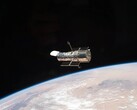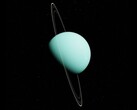The ESA/JAXA BepiColombo mission launched in October 2018. The mission is made of three parts: ESA’s Mercury Planetary Orbiter (MPO), JAXA’s Mercury Magnetospheric Orbiter (MMO or Mio), and Mercury Transfer Module (MTM). MTM is the engine responsible for propelling the mission to Mercury. BepiColombo’s main science phase will only start when it enters Mercury’s orbit and MPO and Mio detach.
However, between 2018 and now, BepiColombo has swung past Mercury six times, Venus twice, and Earth once. During its flyby past Mercury, it measured Mercury’s magnetic environment. The monitoring cameras (M-CAMs) on MTM also captured hundreds of 1024×1024-pixel planet photos of Earth, Venus, and Mercury. The images of Mercury showed craters, volcanoes, and plains on the planet.
The main measurement and imaging, though, will start from November 2026. The magnetometers and particle detectors of both Mio and MPO will be more sensitive. Mio will use its sodium imager and dust detector to investigate other materials around Mercury.
MPO, on the other hand, will capture high-resolution images of Mercury’s surface in X-rays, visible and near-infrared light, and infrared light. The spacecraft will also measure the precise height and shape of Mercury’s surface using its BepiColombo Laser Altimeter (BELA). Ultimately, the mission will give a full picture of what Mercury is made of, including whether or not water is present there.














